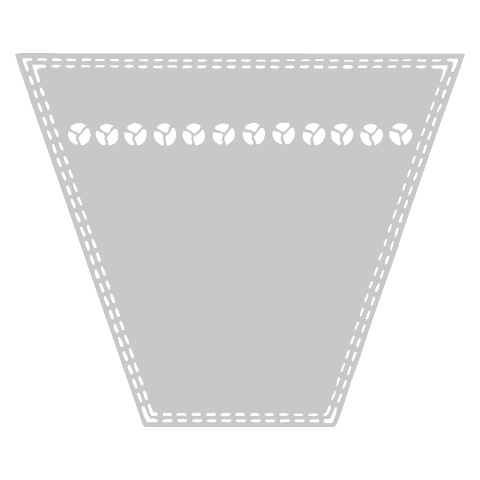The V-belt was invented in 1917 by John Gates. It revolutionised power transmission.
It is the most widely used driving belt. It avoids slipping and alignment problems and transmits more power than the Flat belt.
It is used, for example, in variable speed drives.
This Belt is made without splices and has a V-belt shape.
On installations, it is embedded in a pulley which also has a V-shaped groove, so it cannot slip. This V-shaped profile also ensures better transmission of traction force.
Another advantage of the V-belt is that it does not need to be tensioned very much during assembly. For high power ratings, two (or more) V-belts can be assembled side by side; this system is known as a "multiple belt drive".
It can be made of rubber or polymer, with or without fibre reinforcement (cotton, polyamide, polyester or steel or aramid) to increase strength. There is also a range of articulated V-belts. They can be adjusted in length by removing the necessary links, and have the same power and speed characteristics as belts without splices. They run on the same Pulleys.


